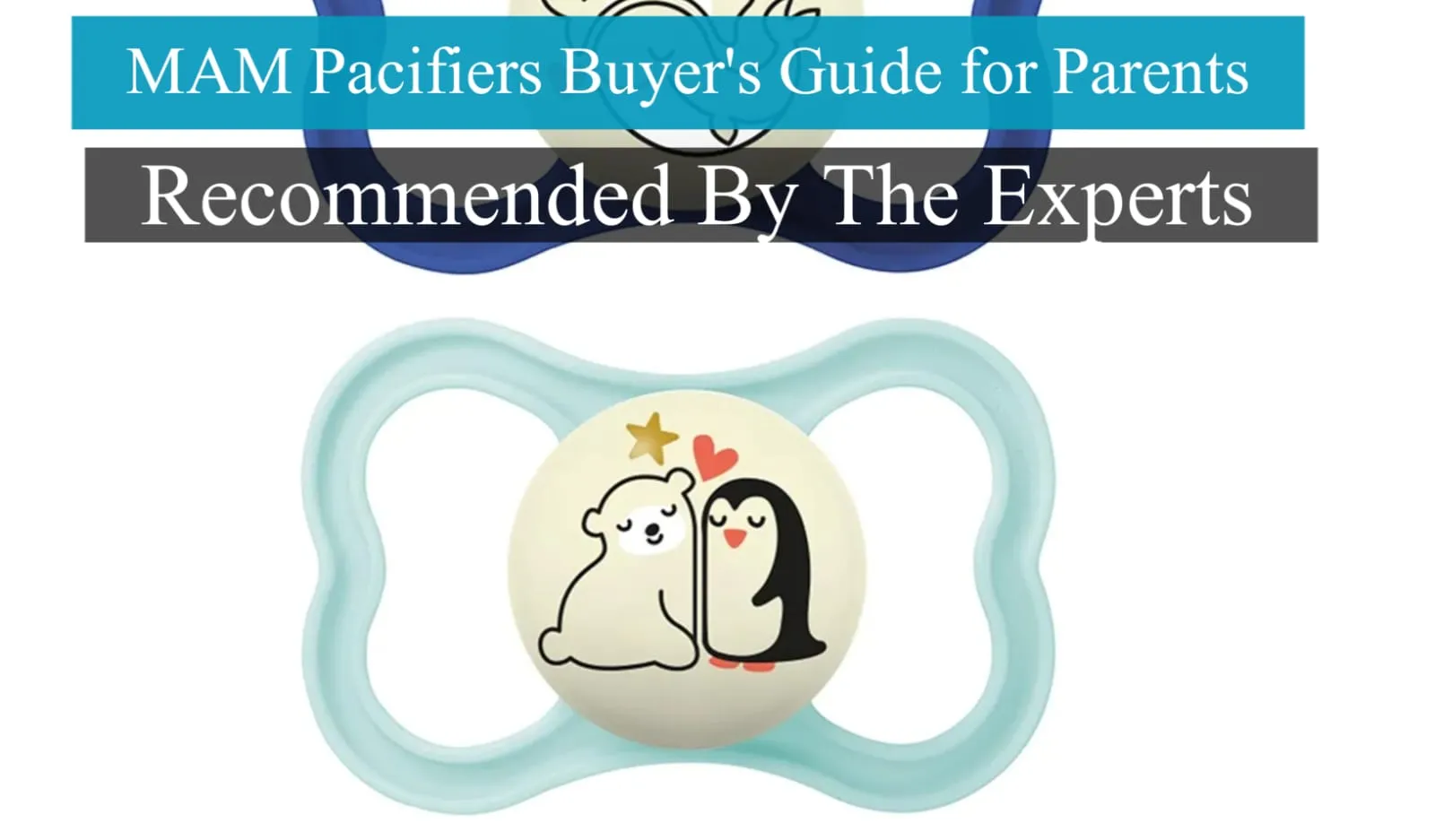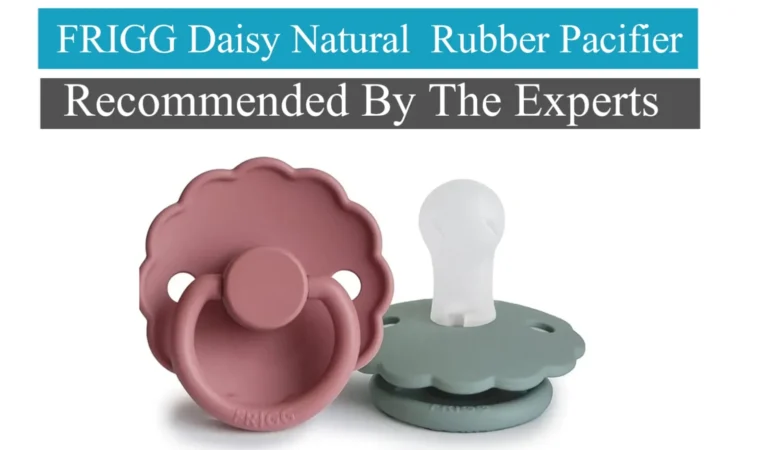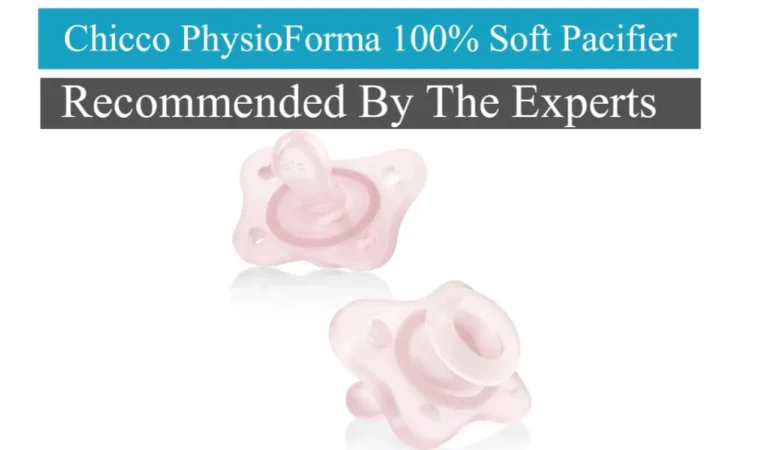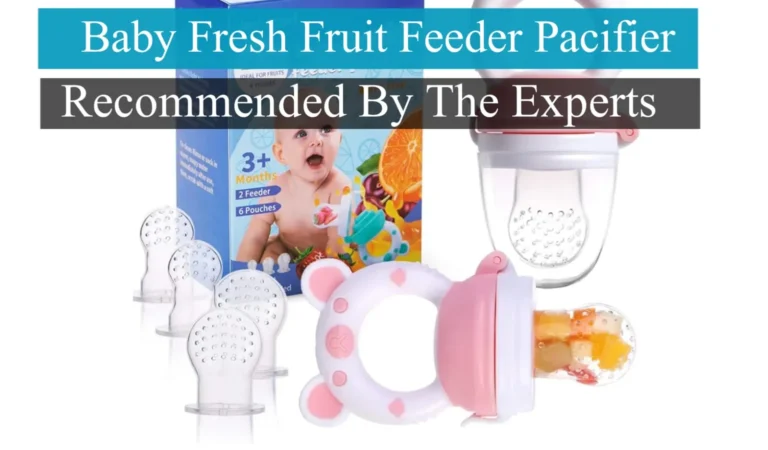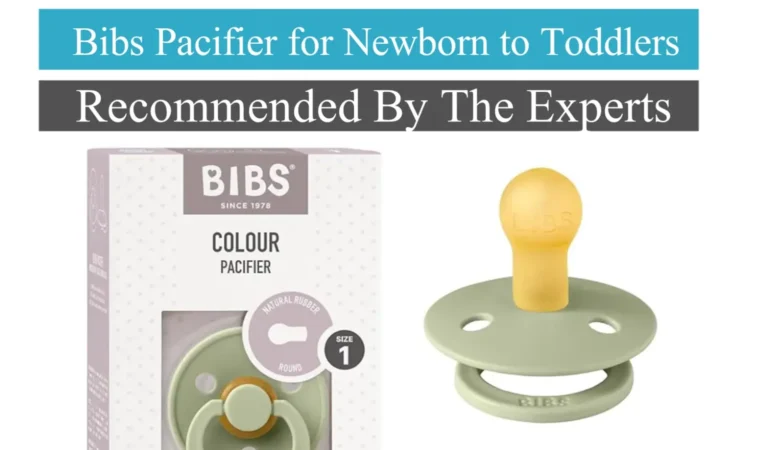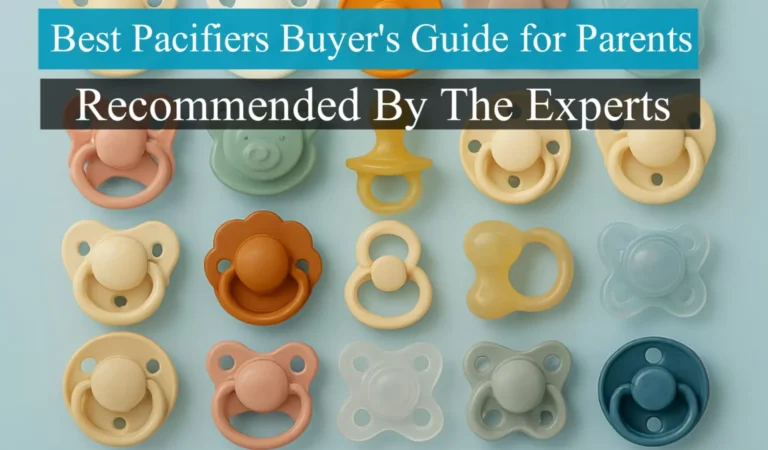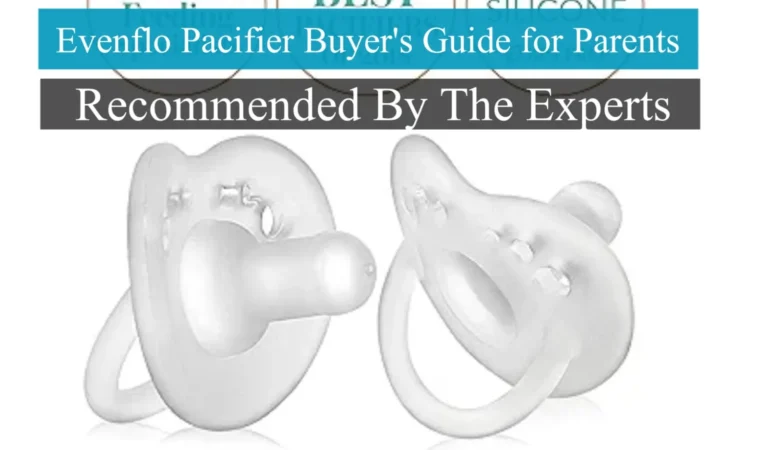Best MAM Pacifiers 2025: Buyer’s Guide for Newborns and Infants
MAM Pacifiers offer safe, orthodontic design, BPA-free materials, and soothing comfort with stylish options for newborns, infants, and toddlers.
The first time I became a parent, I found myself immersed in one of the most daunting tasks of locating a pacifier that would actually suit the needs of my baby. Among unlimited choices, variety of materials, and the lack of comprehensible size charts, it was almost impossible to realize what would work better. I needed a safe, comfortable, and supportive pacifier of healthy oral development, not fussy and not affecting breastfeeding. Being one of the parents, I soon discovered that the incorrect decision might cost me a few sleepless nights and constant irritation of my baby and me.
Having studied and tried a few brands, I found out that MAM pacifiers provided a thoughtful design, comfort and practicality that made life much easier. Coming in a variety of sizes, materials and models, MAM pacifiers appeared to fit the needs of the newborn to toddlers. In this guide, I would like to share my personal experience with these best pacifiers, along with extensive information about their sizes, functionality, comfort, and orthodontic advantages so that other parents can make informed decisions.
My Reason to Use MAM Pacifiers
Pros & Cons
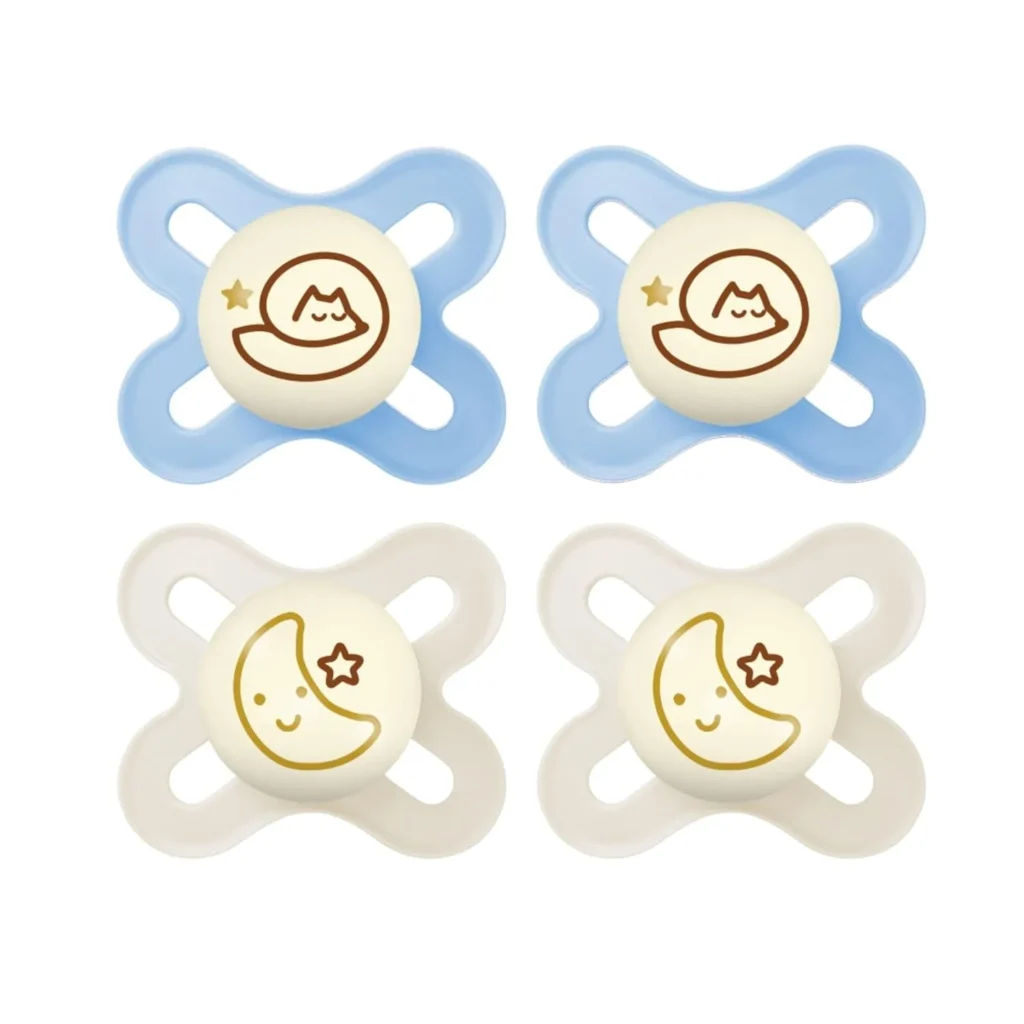
My first reason to select MAM pacifiers was the search of a product that would be safe, comfortable, and orthodontically-correct. Their symmetrical nipple shape was the outstanding aspect that attracted my attention as it is meant to promote healthy teeth and jaw development. I needed a pacifier that would enable my baby to self-soothe and keep his or her oral health intact as a parent. The fact that MAM pacifiers are produced of BPA-free material also gave me a sense of security when it comes to the exposure to chemicals.
The second aspect that attracted me to MAM is that there is a large variety of sizes and models according to the different stages of development. Pacifier is available in many sizes to suit newborns, toddlers, and every age. The softness of the nipple, the light weight of the shield and the ventilation design allowed my baby to easily accept the pacifier and remain comfortable over a longer time. I soon realized that a well-fitting and ergonomically designed MAM pacifier can alleviate fussiness and increase sleep and a feeling of security in my child.
What are Pacifier Materials? Silicone vs. Latex
The silicone and latex MAM pacifiers have their exclusive benefits. Silicone nipples are soft yet firm, extremely durable, and do not lose their shape when being chewed often. I also discovered that silicone pacifiers were very easy to clean and sterilize and therefore convenient to use on a daily basis. My baby got used to it fast and I realized the firmer texture was perfect because oral muscles were developing.
Instead, latex nipples are softer and more flexible with a natural feel of the mother breast. I was able to observe that the use of latex pacifiers may be more readily adopted by babies in the newborn phase. Nonetheless, latex wears out faster and needs to be checked regularly to see whether it has cracks or tears. Both are BPA-free and safe, and I found out that the correct material to choose depends on your baby and his or her preferences, oral development stage, and possible allergy issues. The fact that I had both of them available enabled me to test and find out what my child liked.
Age and Size of Pacifiers
The appropriate size of MAM pacifier is critical to comfort, safety, and normal oral development. MAM pacifiers are classified into three key sizes of 0+ months, 6+ months and 18+ months. I was taught at a tender age that the correct size would avoid complications such as drooling too much, chewing too much or even orthodontic complications in the future.
0+ Months
These MAM pacifiers are suitable to newborns and are soft with a small nipple and lightweight shield. I discovered that they could fit into the tiny mouth of my baby without interfering with the breastfeeding. Their flexibility and size allow newborns to acquire a natural sucking rhythm and reduce irritation to the skin.
6+ Months
Babies will be getting stronger oral muscles and teeth appear. To meet these changes, the 6+ months pacifier is a little more rigid, with a bigger nipple. I observed that my baby was able to suck better and got less frustrated and the shield was shaped in a way that it allowed air to circulate thus avoiding rashes.
18+ Months
The 18+ months size is useful to those toddlers who still require the pacifier comfort. The nipple is thicker and bigger and the shield is made to resist active toddlers who can chew, drop, or carry around the pacifier. I liked that these pacifiers gave a sense of security without oral irritation to facilitate bedtime routines.
MAM Pacifier Special Features and Benefits
| Feature | Details |
|---|---|
| Brand Origin | Developed by MAM Baby |
| Design Purpose | Orthodontic nipple design to support healthy jaw and teeth development |
| Material | BPA-free, BPS-free silicone or natural latex |
| Nipple Shape | Symmetrical design; stays in baby’s mouth comfortably |
| Safety | Meets international safety standards; gentle on baby’s skin |
| Shield Design | Air holes in shield for breathability and to prevent skin irritation |
| Sizes | Available for different stages: newborn (0–2m), infant (2–6m), toddler (6m+) |
| Special Features | Self-sterilizing case (microwave safe); glow-in-the-dark options |
| Style & Colors | Wide range of trendy, playful, and gender-neutral designs |
| Ease of Cleaning | Dishwasher safe and easy to sterilize |
The MAM pacifiers feature various considerations that are made to benefit the babies and parents. Among its best features is the orthodontic nipple which is designed to allow the proper positioning of the jaws and the teeth and allow the normal sucking reflex to occur. I realized that my baby was able to suck comfortably without getting strange tongue or jaw postures.
Other additions are ventilated shields which provide air flow to avoid skin irritation and glow-in-the-dark so that night time retrieval becomes easy. I discovered that the lightweight nature of the pacifier allowed my baby to hold it in their mouth easily to encourage longer durations of self-comforting. All the features collaborated to instill comfort, hygiene, and daytime and nighttime practical support.
Sleep support and Nighttime Use
Among the features that I liked most about MAM pacifiers is the fact that they are very helpful in comfort and sleep at night. At the beginning of my babyhood, my baby had problems with settling down at night and would wake up several times because of some discomfort or frustration. Since I introduced the MAM Night Glow pacifier, I observed a drastic change. My baby was able to suckle more peacefully and sleep longer hours without waking due to the soft silicone nipple of the pacifier and its lightweight design.
Another aspect that makes the sleep comfortable is the ventilated shield. It does not allow moisture accumulation and irritation of the skin that can interfere with sleep. And I liked the glow-in-the-dark effect; I could find the pacifier at 2 am without switching on the lights and waking up my baby. The pacifier gradually became a ritual in our bedtime routine and it would comfort my baby and indicate that it was time to calm down. In my experience, I discovered that buying a well-designed MAM pacifier helped to make my baby and me sleep much better.
Teething Relief and Use of Pacifier
Teething is among the most stressful periods both to the babies and the parents. I found out that MAM pacifiers were soft on sore gums and did not harm sensitive oral tissues. The flexible silicone or latex nipple enabled my baby to chew without being harsh and the orthodontic style was able to guarantee healthy oral growth.
The use of pacifiers was also combined with chilled teething toys which further alleviated the pain. I observed that my baby was less irritable and calmer during teething times particularly at night. Pacifiers are an essential part of my parenting toolbox, which helps to comfort and calm when the pain of teething is the most intense.
Weaning Strategies on Pacifier Use
Taking a baby off a pacifier is not an instant process and it takes time and consistency. I started by introducing a restriction to the pacifier usage with my child during the day, and during the naps or bedtime only. I slowly added other sources of comfort like stuffed toys or rocking back and forth.
I also learned that the 18+ months pacifier was useful in conveying the notion that pacifiers were used to sleep. Breaking it down to simple words and maintaining the same patterns helped in the transition since I explained the situation to my toddler. Noting such behavior as chewing, fussiness and sleeping patterns enabled me to know when and how to restrict the use of pacifiers.
The Daily Use Parental Insights
Personally, my experience with MAM pacifiers goes beyond a soothing device, it is a parenting tool. They minimized night stress, permitted my baby to learn to self-soothe, and facilitated normal oral development. I discovered that listening to preferences of my baby, keeping hygienic, and changing the sizes at the right time made it a good experience to both of us.
Another thing I learned was that by using pacifiers along with organized schedules including regular naps and bedtime, I could enhance the quality of my babies sleep. Keeping several pacifiers on rotation made it so that there would be no wear and tear problems and always one available when it is required. Being smart with pacifiers instead of using them all day also promoted independence, but still gave them a sense of comfort when they needed it.
Safety and Hygiene Practices
Safety is my first concern. MAM pacifiers are free of BPA and phthalate and are of high European safety standards. I practiced the sterilization of new pacifiers and cleaning of the used pacifiers with warm soapy water or a sterilizer on a daily basis. This made sure that the pacifier of my baby was hygienic and safe.
I also listened to checking the pacifier to see it had cracks, discoloration, and wear and tear. Latex or silicone may wear out with time and it is important to replace pacifiers when there is evidence of wear. The correct use of the pacifier according to the age-appropriate size, maintaining the cleanliness of the pacifier, and storing it in a secure manner when not in use made the whole process of using the pacifier both safe and stress-free to me and my baby.
FAQs : MAM Pacifiers
Final Thoughts
When I look back at my experience as a new parent, I could confidently state that MAM pacifiers were safe, reliable and most comfortable ever, right at the newborn stage to the toddler years. The orthodontic design was what impressed me the most because it helped to support my baby in her natural jaw and teeth development without any strain or odd placement. Together with other intelligent details such as ventilated shields, glow-in-the-dark versions, and lightweight design, these pacifiers really helped to minimize fussiness, self-soothing and longer, restful sleep. The fact that the sizes of MAM are age-appropriate was that I could easily switch the size of my baby, between 0+ months to 6+ months and then to 18+ months without having to worry about the comfort and safety of my baby.
Based on my personal experience, to get the most out of these pacifiers, it was necessary to pay close attention to the preferences of my baby, the way he chews, and the way he feels comfortable. The right size and material, be it silicone, to achieve durability or latex to have a softer and more natural feel, was vital in helping my baby embrace the pacifier and have healthy oral development. Another determinant was hygiene; cleaning and inspection after every use helped avoid wear and tear, which makes pacifiers safe and durable.

